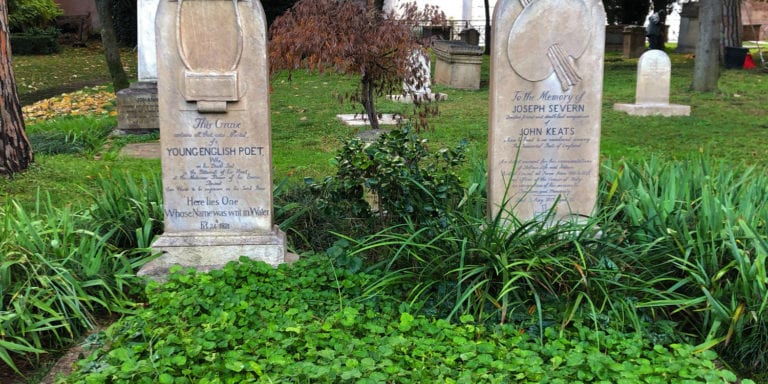
And if you missed it, read Part 1 here. (now with pictures)
Day 2. Sunday.
Now I discovered where it was, my only firm plan for the whole trip was to make the long excursion to Protestant Cemetery in the Caracala section. It was as far south on the guidebook map as my hotel was north.
I awoke pretty late for me. The Hilton offered a wondrous breakfast spread. There were all kinds of pastries, breads and cheeses. I ordered eggs sunny side up. I took a lot of bacon which was kind of like bacon prosciutto. I burned some artisanal round brown bread. My “status” meant it was free. I partook heavily from the Espresso and Cafe Americano buttons on the automated coffee grinder/brewing machine.
The morning before when I was checking in, the receptionist had given me the hotel’s version of a tourist map. It was more stylized than the detailed multipage maps in the guidebook. Big attractions were highlighted by cartoon drawings of the sites. She had also explained that the tram, right outside the hotel, was very easy and inexpensive to get me down to the “old stuff.” She had drawn two long arcs in ballpoint and labeled one #3 and the other #19. I’m usually averse to surface mass transit. But Rome only seemed to have a pretty rudimentary Metro. She had sold me 4 tickets for the tram costing 1.50 Euros each. I could go as far as I wanted on each. My only goal was the Cemetery, but I thought I could take the tram part way there and then walk my way down seeing various sites on the way.
Big mistake.
I hopped on the tram, and there was no directory inside to the many, many stops the train was making. Nor did any of the maps I had show the route the #3 would take. At each stop, I strained to read its name and then find that spot on the map. I gave up and just hopped out after about 10 stops. It took some searching, but I found my location on the detailed maps in the big book which barely slipped into my blazer pocket by using the street index. I was close to National Library! I made my way to it. I could only see it through its gates. It was Sunday, of course. It was closed. It was a pretty bland looking building—like a 1950s brick office building. I was unsure if I would make the effort to return. The location was remote and uninspiring.
I passed by a number of other civil buildings. Rome has as many civil buildings as it does churches. But they are generally newer buildings. Bureaucracy is the new religion?
I passed a striking old building—the Ministry of Aviation. It took me a moment or two to recognize the architecture as Fascist.
It was built in 1931.
Throughout the trip I saw almost no references to that era or World War II or the postwar years of privation.
Then I found some churches and basilicas and towers and obelisks and piazzas and statues and Roman gates.
Lots of churches and basilicas and…
Then I was in the Forum. Nothing made any sense to me. Off to one side I saw the Coliseum. Then all around was a subterranean labyrinth of toppled pillars and piles of rock. Acres and acres of seemingly random ruins.
I saw the Circus Maximus was not too far. Then I put it together that the old chariot racecourse was not far away from the Protestant Graveyard.
I had to consult all three maps I was carrying to figure out the route from the Circus Maximus to the Protestant Graveyard. The guidebook also indicated there was a Pyramid (?!) near the cemetery. After a couple bad turns, I was walking through the Albania Piazza.
I came to a large tram stop. There was a train departing. The sign on its front read “Via Giulia”! A miracle! I’d be able to get right back to my front door from this remote spot.
A few steps further, I saw a big bright white marble pyramid.
It is the https://en.wikipedia.org/wiki/Pyramid_of_Cestius
Somewhere nearby, none of the maps was very clear, was the cemetery.
I perambled to the pyramid. It was quite tall. And quite incongruous. It was built into more long spans of ancient high roman walls.
I got to the far corner and a big wrought-iron gate was open. Down a number of steep steps was a grassy park at the base of the pyramid. There were tents set up and people and cats milling around. It was a feral cat festival for the colony that lives inside the perimeter of fencing and walls surrounding the pyramid.
I gingerly stepped down into the small crowd of people and tents and cats.
Cat people…
The feral cats were all beautiful, well fed and well groomed.
Back up to the street, I decided if I walked around the “block” I must certainly find the cemetery.
Sure enough, I came to its entrance.
It was closed. On a Sunday afternoon.
I raised my phone above the gate and took a blind shot.
A cat was walking up a path between rows of tombstones.
I made my way back to the tram stop and stepped aboard the Via Giullia train.
It rumbled all the way through the city and in about 30 minutes stopped right in front of my Hilton.
I decompressed a bit and then walked back to Harry’s.
I wanted to try some more cocktails and another entrée.
Oh, and the free chips and nuts made the mile-long walk worthwhile.
My first choice was a Vesper. It made me feel like James Bond. Later I had a Negroni.
Everything else was perfect there as well. I felt as if I “belonged.”
Everything on the menu looked exotic and intriguing. I chose:
Riso al Salto alla Milanese con Ristretto di Carne in Stile Harry’s Bar
(Extra-Crispy Toasted Rice Milanese Style with Brown Meat Sauce)
The food was, again, like nothing I’d ever had before.
Monday, December 9.
I’d bought a 3-Day Roma Pass—the first morning as I was checking in. Supposedly it would get me into all kinds of museums, galleries and sites. It also had a double decker circular bus route and unlimited mass transit included.
But my first goal was the graveyard.
I took the tram. I knew just where I would get off.
This morning the gate was open. I stepped through and was met by a cat seated below a very old sign directing you to different sites. There was an info booth along the cemetery wall. I stepped in and awkwardly tried to ask for a guidebook. The two middle-aged ladies both replied in prim English accents.
I bought the 40-page guidebook with the large foldout map:
Il Cimitero Acattolico Di Roma.
Keats’ grave was off to the side in a kind of meadow whereas most of the graveyard was more traditional—tightly packed rows of tombstones and statues.
When I got to it, I let out a heavy sigh. It was so beautiful and evocative:
This Grave
contains all that was Mortal,
of a
YOUNG ENGLISH POET
Who,
On his Death Bed,
In the Bitterness of his Heart,
At the Malicious Power of his Enemies,
Desired
these Words to be engraven on his Tomb Stone
“Here lies One
Whose Name was writ in Water.
Feb 24th 1821
For some reason, Vaughan Williams’ “Fantasia on a Theme by Thomas Tallis” welled up within me.
“Your despair… You did it, Keats!” I thought as tears rolled down my cheeks. “You did it though you never knew.”
I thought of his friends bearing his small withered body out of his room. Would he have weighed 70 pounds by that point? A fallen desiccated leaf like those thousands on the ground all around me.
Buried with him are unopened letters from his fiancée, his true love Fanny Brawne. The young woman to whom he was never to return.
Brawne remained almost anonymous. (As did Keats.) But it turned out:
Brawne drew consolation from her continuing friendship with Keats’ younger sister, who was also called Fanny. Brawne later married, and she bore three children, whom she entrusted with the intimate letters Keats had written to her. When these were published in 1878, it was the first time the public had heard of Brawne, and they aroused interest among literary scholars. But they attracted much venom from the press, which declared her to have been unworthy of such a distinguished figure. By contrast, the later publication of Brawne’s letters to Fanny Keats showed her in a more favourable light, greatly improving her reputation.
I wandered about this most beautiful graveyard. My spirit was light as a feather. My feet felt heavy as clay.
The Pyramid was actually contiguous with the walled graveyard. Beautiful angelic cats roamed all about here and there.
The map led me to Shelley’s grave.
A quote from the Tempest was at its foot. Perhaps Shelley was lost in a tempest after all.
Nothing of him that doth fade
But doth suffer a sea-change
Into something rich and strange
From there, I wandered up the lonely aisles and down the narrow lanes. I found Goethe’s only son.
There were some other notables, but the most beautiful sentiments in stone were often for people of no fame.
So many of the stones read:
“Died in Rome”
A matching stone next to Keats was Severn’s—his deathbed companion. Severn died 58 years later and was an accomplished artist. But he chose to have engraved on his stone “Keats’ Death Bed Companion”
Next to Shelley was buried his friend Edward John Trelawny—a noted author in his own right. He died in 1881. Nearly 60 years after the poet.
Graveyards are cautionary places. They are also monuments and memorials to those that came before.
I stepped out that gate changed. I’d had a kind of Scroogian epiphany.
“Keep trying.”
I hope it lasts.
I’ll never forget the angel’s message above one young death nearly two centuries ago.
The rest of Rome was anticlimactic. Touristy stuff people from around the world have come to see for centuries. That day I stuck my hand in the Mouth of Truth—Bocca della Verita. It didn’t bite. I wandered through the Forum. I visited the Capitoline Museum. I’ve never been drawn to sculpture—much. But here I “got it.”
I saw the ancient statue of Romulus and Remus being suckled by a she wolf.
I toured the Coliseum. Dylan’s words resonated. A large video screen showed reproductions of 19th century romantic paintings of people being savaged by large cats. Naked men women and children slaughtered unarmed—for public amusement. I thought of how human nature hasn’t changed that much. The brutal gladiator games broadcast on television of men pummeling one another’s heads with fists knees and feet. Below me in the center of this stadium thousands had been slaughtered—professionals and amateurs, beasts and babies…
Who are these coming to the sacrifice?
Keats
To what green altar, O mysterious priest,
Lead’st thou that heifer lowing at the skies,
And all her silken flanks with garlands drest?
What little town by river or sea shore,
Or mountain-built with peaceful citadel,
Is emptied of this folk, this pious morn?
And, little town, thy streets for evermore
Will silent be; and not a soul to tell
Why thou art desolate, can e’er return.
O Attic shape! Fair attitude! with brede
Of marble men and maidens overwrought,
With forest branches and the trodden weed;
Thou, silent form, dost tease us out of thought
As doth eternity: Cold Pastoral!
When old age shall this generation waste,
Thou shalt remain, in midst of other woe
Than ours, a friend to man, to whom thou say’st,
“Beauty is truth, truth beauty,—that is all
Ye know on earth, and all ye need to know.”
I visited more of those sites everyone knows. There’s no need to go on about that.
That evening I returned yet again to Harry’s.
Anything else would have been anticlimactic. I was greeted with handshakes and friendly stories.
I was introduced to an elderly man seated outside.
“He is the most famous Italian paparazzi—the Galella of Italy.”
This guy had chased the famous and infamous up and down the Via Veneto…and all of Italy.
I was my typical foolish self. Too shy to engage much.
Tuesday.
More sites and galleries and churches.
My first stop was the Villa Borghese Gallery—with all its statues by Bernini and…no photos allowed.
But I did sneak a couple.
Stone into flesh. Flesh into stone.
And I saw a Unicorn!
More museums…
I saw one of the great copies of Discobulus.
In 1937 Adolf Hitler negotiated to buy it, and eventually succeeded in 1938, when Galeazzo Ciano, Minister of Foreign Affairs, sold it to him for five million lire, over the protests of Giuseppe Bottai, Minister of Education, and the scholarly community. It was shipped by rail to Munich and displayed in the Glyptothek; it was returned in 1948. It is now in the National Museum of Rome, displayed at the Palazzo Massimo.
My departed friend Barbara Mertz (a.k.a. Elizabeth Peters / Barbara Michaels) commissioned a full-size marble copy in Rome some 20 years ago. She had a temple and pool built for it. I think it was unveiled around Christmas. I quipped to her:
“I can see how you would string the lights, but where would you hang the b****”
That night I went to Harry’s once again. Once again, it was as if I ‘d never really tasted cocktails or food before.
Wednesday.
My last full day. I’d arranged for a semi-private guided tour of the Vatican museums and basilica.
A small thin young man led six of us. He spoke excellent English with a charming erudite accent.
The Sistine ceiling…everything…an immersion into the wonderful things people can do—in such juxtaposition to the Coliseum and all the martial cruelty elsewhere in the city.
The tour lasted about 4 hours.
If you have a chance do something similar. The guide showed and explained things that helped put much into context.
Plus, we skipped all the different lines.
For example, he told us those letters in the Dome of St Peter’s high above are “3 METERS tall.”
After the Vatican, I just sort of wandered through the city in a daze from the various Vatican art cultural immersions. I went into more spectacular churches.
I ended up at the Babingtons Tea Rooms (est 1893.) It was the building opposite the Keats-Shelley Museum at the base of the Spanish Steps. It was also where Liz Taylor and Dick Burton had secret rendezvous during the filming of Cleopatra. It was a wonderful very prim British meal, and I had a Pink Gin (Gin with Angostura bitters.)
After the tea house, I did walk up the Spanish Steps to see Rome in all its glory.
Thursday.
The driver picked me up at 7:30 am.
The flight was late. The Flight was long.
The line through the automated passport check took well over an hour—even though I have TSA Pre Check. I applied for Global Entry nearly 6 months ago. I am still “pending.”
The traffic from the airport was horrendous.
I was not back in Frederick until evening—nearly twenty hours after I’d been picked up at the hotel.
Postlude
Oscar Wilde visited the Protestant Cemetery in 1877. The story goes he was overwhelmed there. He swooned and dashed off a Petrachan sonnet on the spot. The manuscript was in the Museum.
[I virtually swooned there as well.]
This is part of his contribution to The Irish Monthly. July 1877:
Lord Houghton calls this cemetery ‘one of the most beautiful spots on which the eye and heart of man can rest,’ and Shelley speaks of it as making one ‘in love with death, to think that one should be buried in so sweet a place’; and indeed when I saw the violets and the daisies and the poppies that overgrow the tomb, I remembered how the dead poet had once told his friend that he thought the ‘intensest pleasure he had received in life was in watching the growth of flowers,’ and how another time, after lying a while quite still, he murmured in some strange prescience of early death, ‘I feel the flowers growing over me.’
But this time-worn stone and these wildflowers are but poor memorials of one so great as Keats; most of all, too, in this city of Rome, which pays such honour to her dead; where popes, and emperors, and saints, and cardinals lie hidden in ‘porphyry wombs,’ or couched in baths of jasper and chalcedony and malachite, ablaze with precious stones and metals, and tended with continual service. For very noble is the site, and worthy of a noble monument; behind looms the gray pyramid, symbol of the world’s age, and filled with memories of the sphinx, and the lotus leaf, and the glories of old Nile; in front is the Monte Testaccio, built, it is said, with the broken fragments of the vessels in which all the nations of the East and the West brought their tribute to Rome; and a little distance off, along the slope of the hill under the Aurelian wall, some tall gaunt cypresses rise, like burnt-out funeral torches, to mark the spot where Shelley’s heart (that ‘heart of hearts’!) lies in the earth; and, above all, the soil on which we tread is very Rome!
As I stood beside the mean grave of this divine boy, I thought of him as of a Priest of Beauty slain before his time; and the vision of Guido’s St. Sebastian came before my eyes as I saw him at Genoa, a lovely brown boy, with crisp, clustering hair and red lips, bound by his evil enemies to a tree, and though pierced by arrows, raising his eyes with divine, impassioned gaze towards the Eternal Beauty of the opening heavens. And thus my thoughts shaped themselves to rhyme:
HEU MISERANDE PUER
[The Grave of Keats]
Rid of the world’s injustice and its pain,
He rests at last beneath God’s veil of blue;
Taken from life while life and love were new
The youngest of the martyrs here is lain,
Fair as Sebastian and as foully slain.
No cypress shades his grave, nor funeral yew,
But red-lipped daisies, violets drenched with dew,
And sleepy poppies, catch the evening rain.
O proudest heart that broke for misery!
O saddest poet that the world hath seen!
O sweetest singer of the English land!
Thy name was writ in water on the sand,
But our tears shall keep thy memory green,
And make it flourish like a Basil-tree.
Rome, 1877.

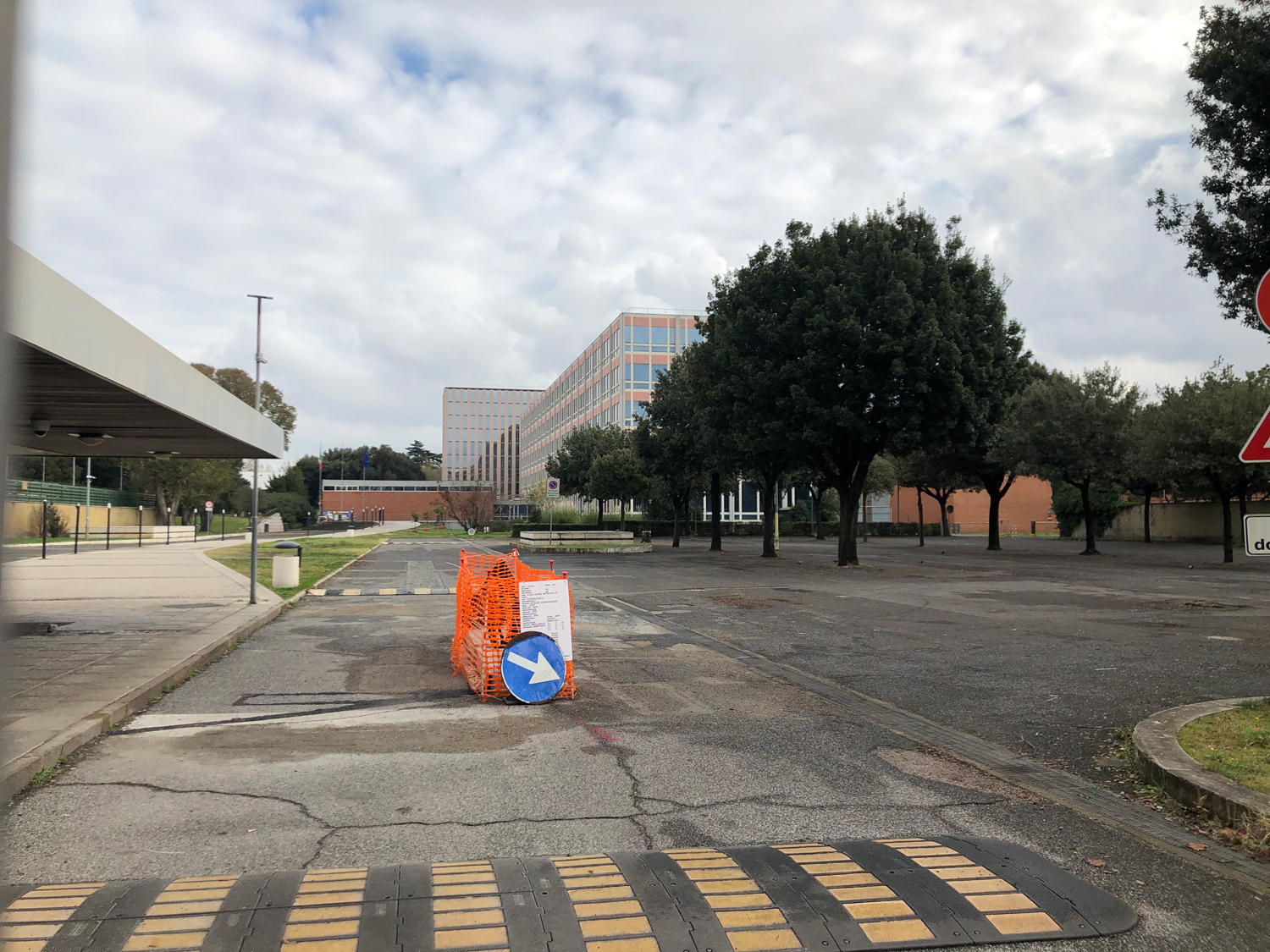
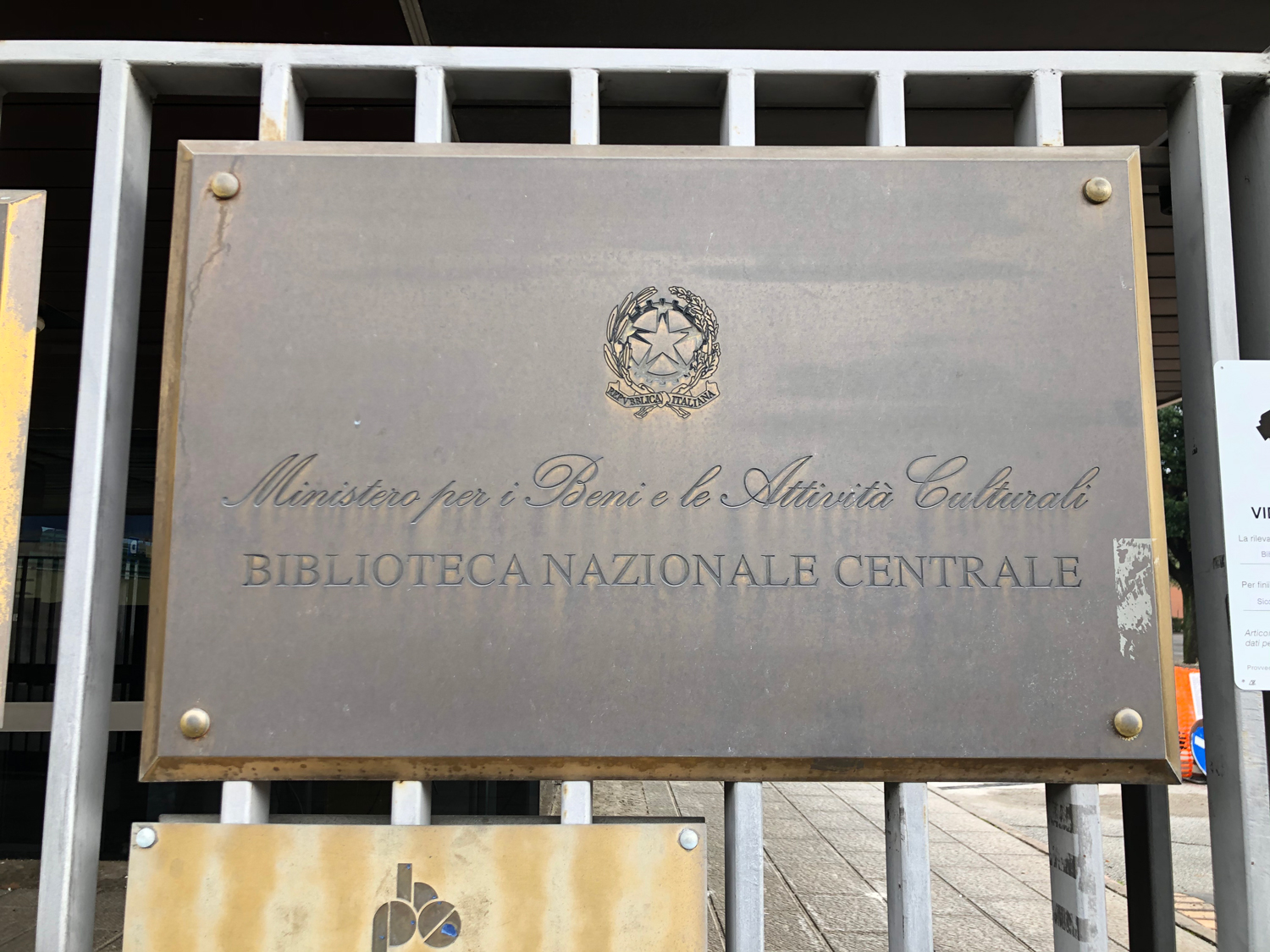
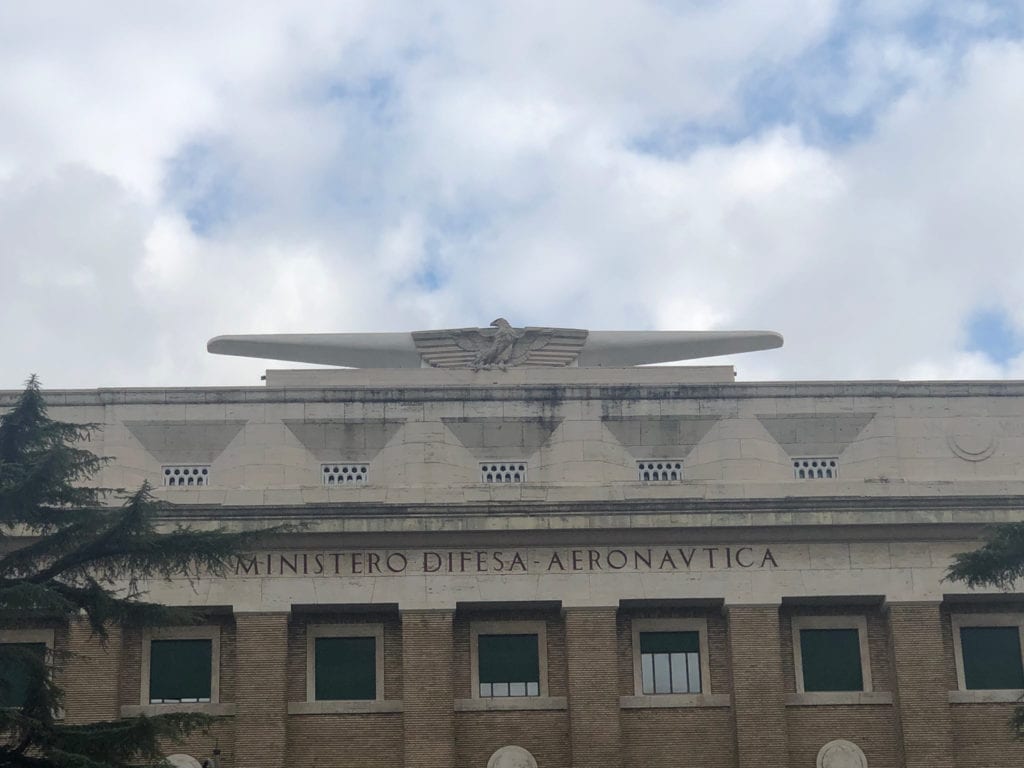
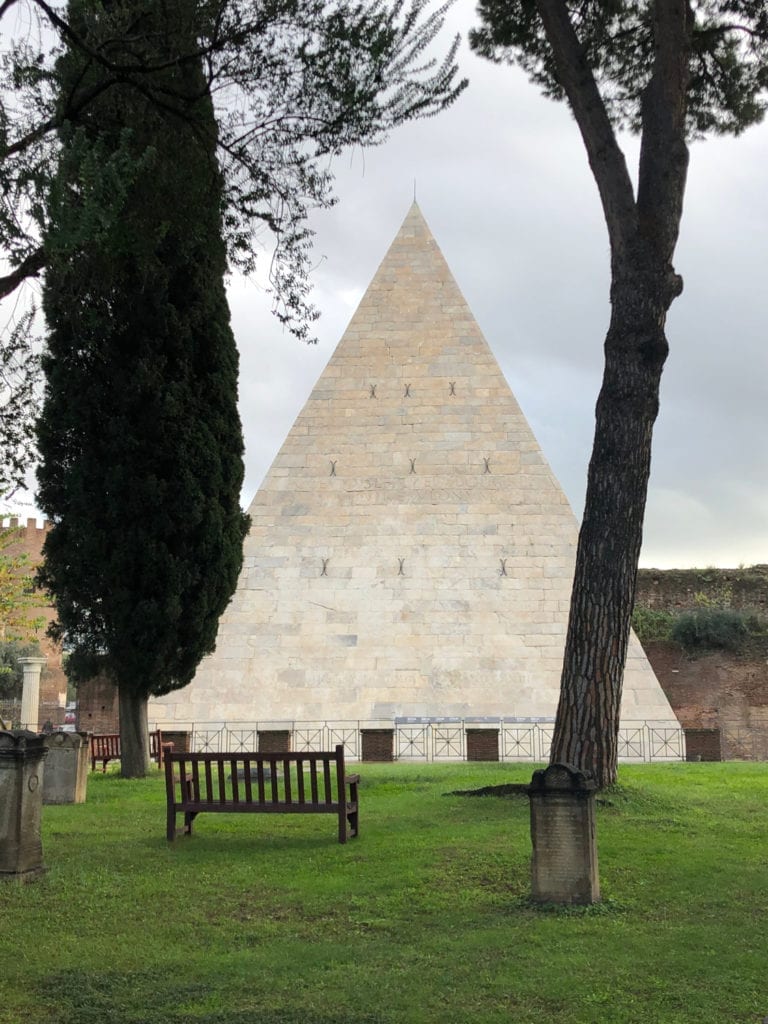
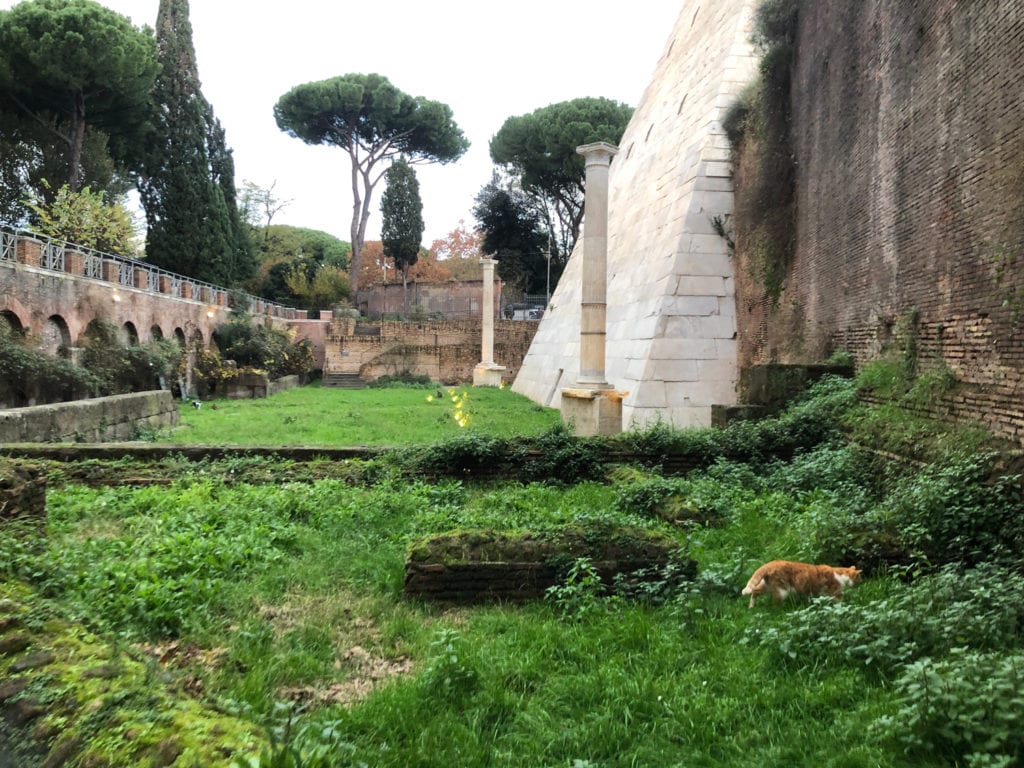
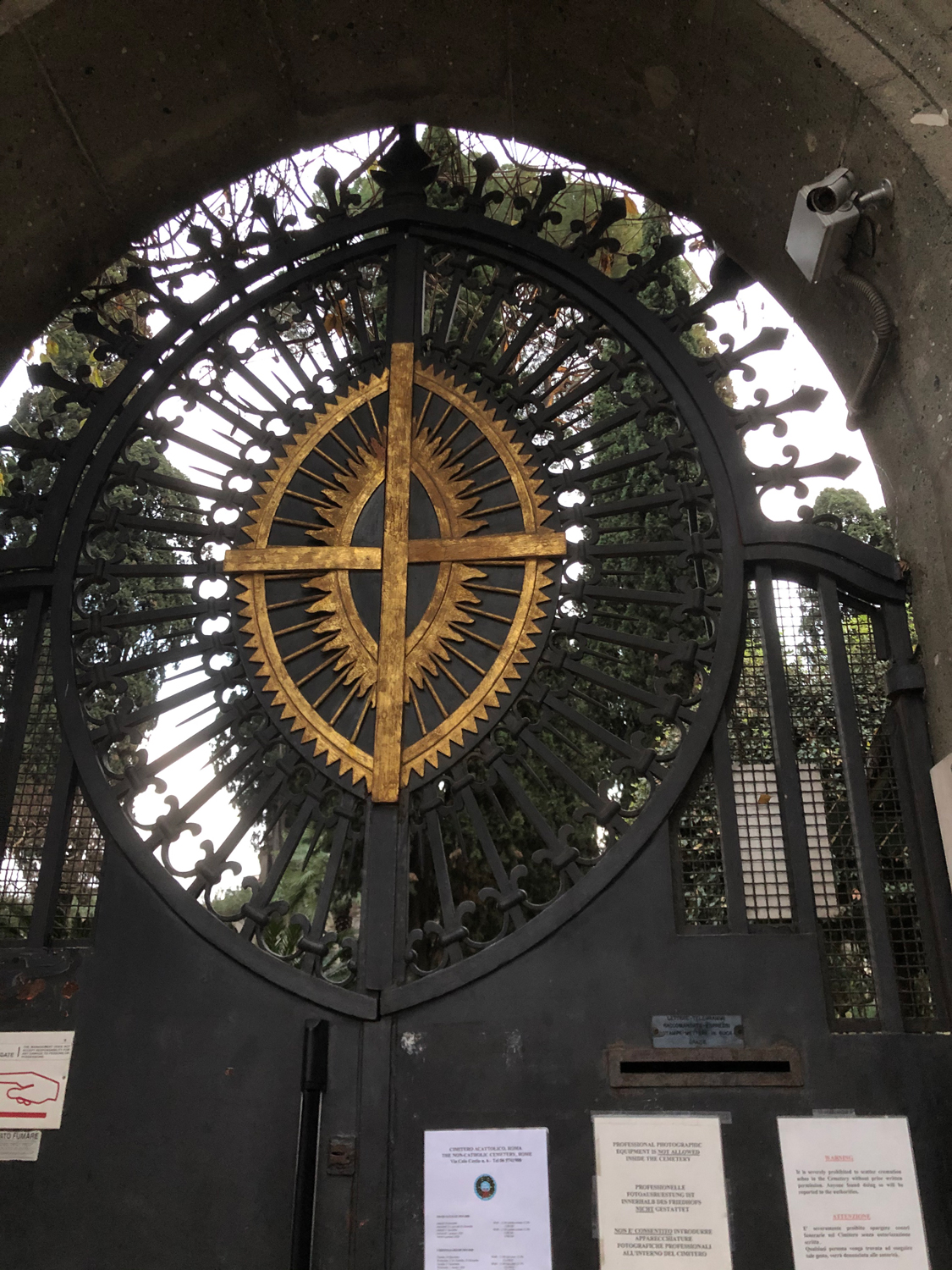
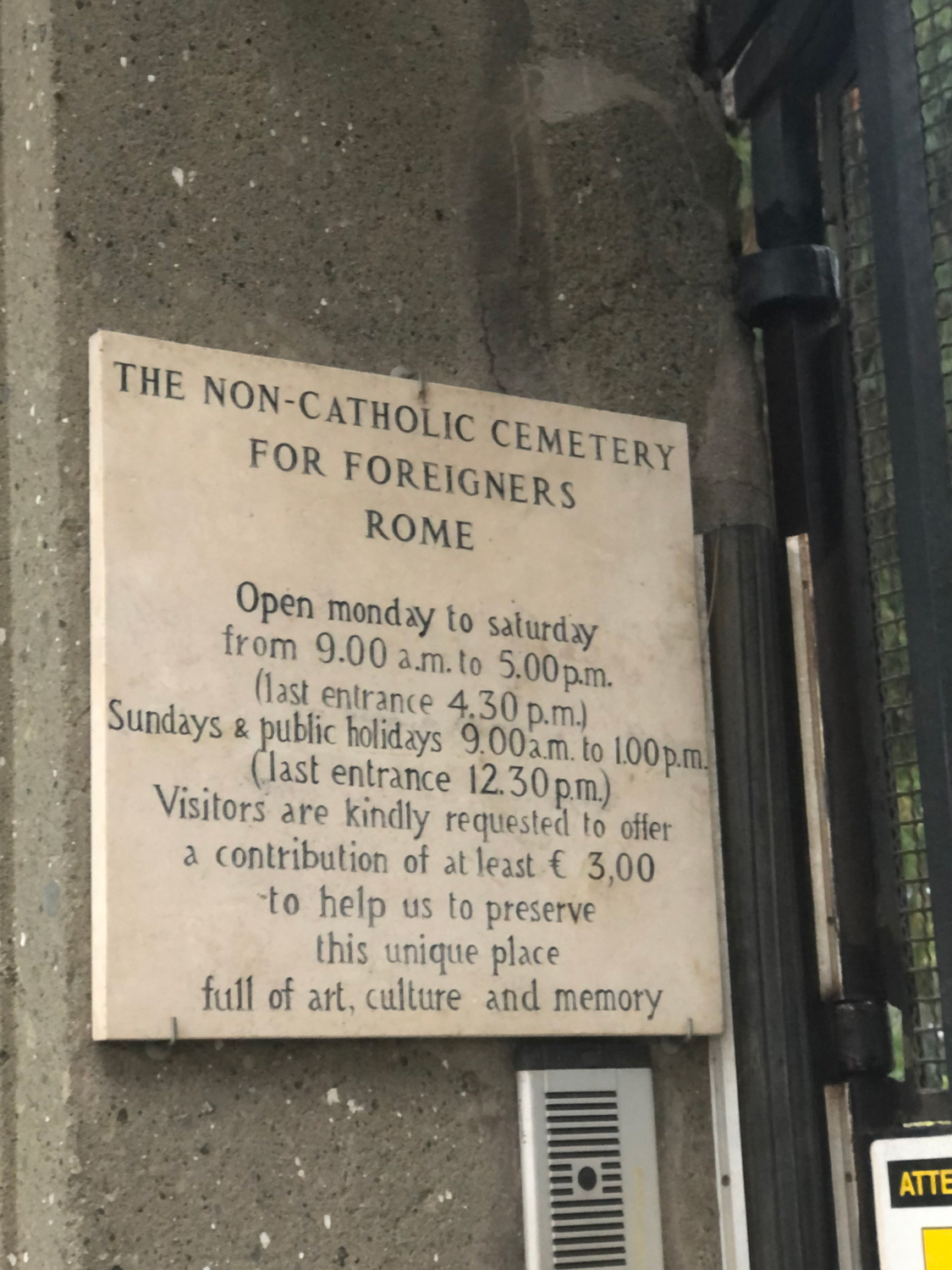
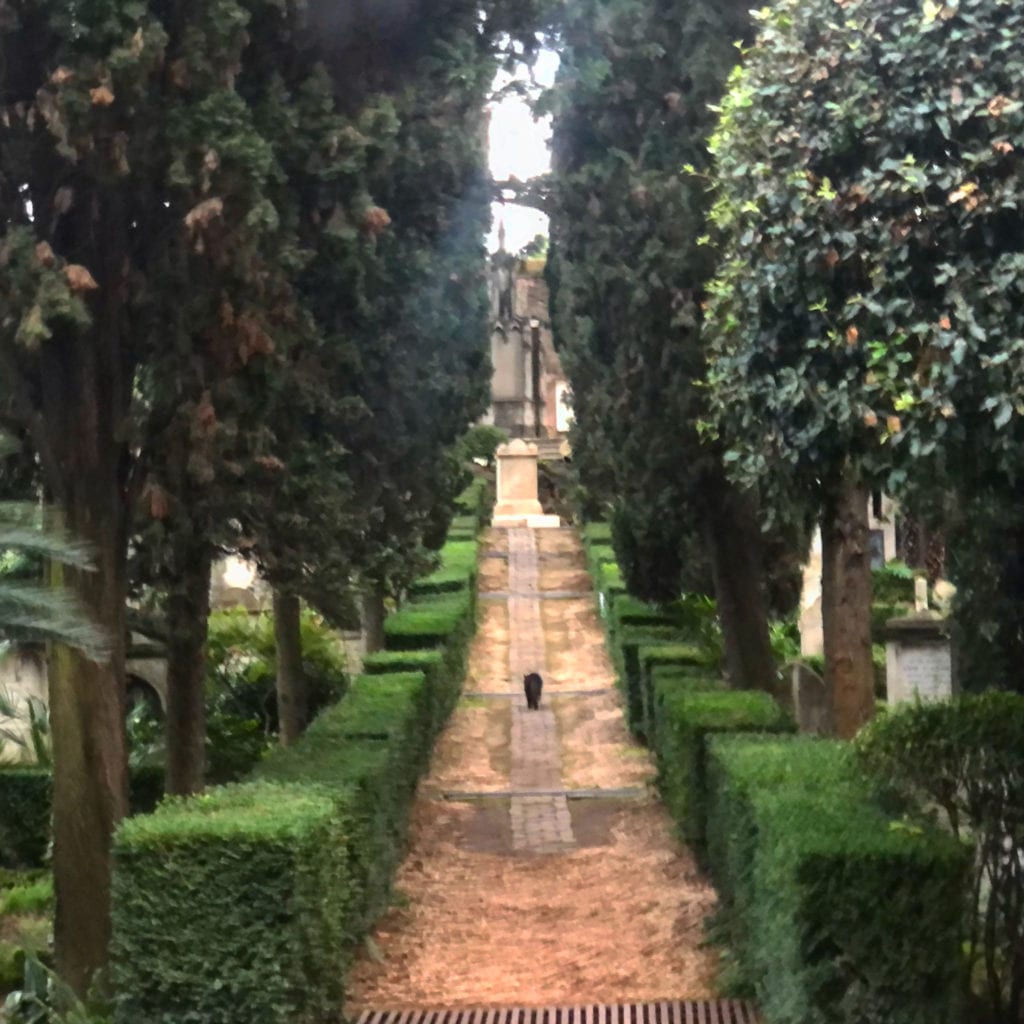
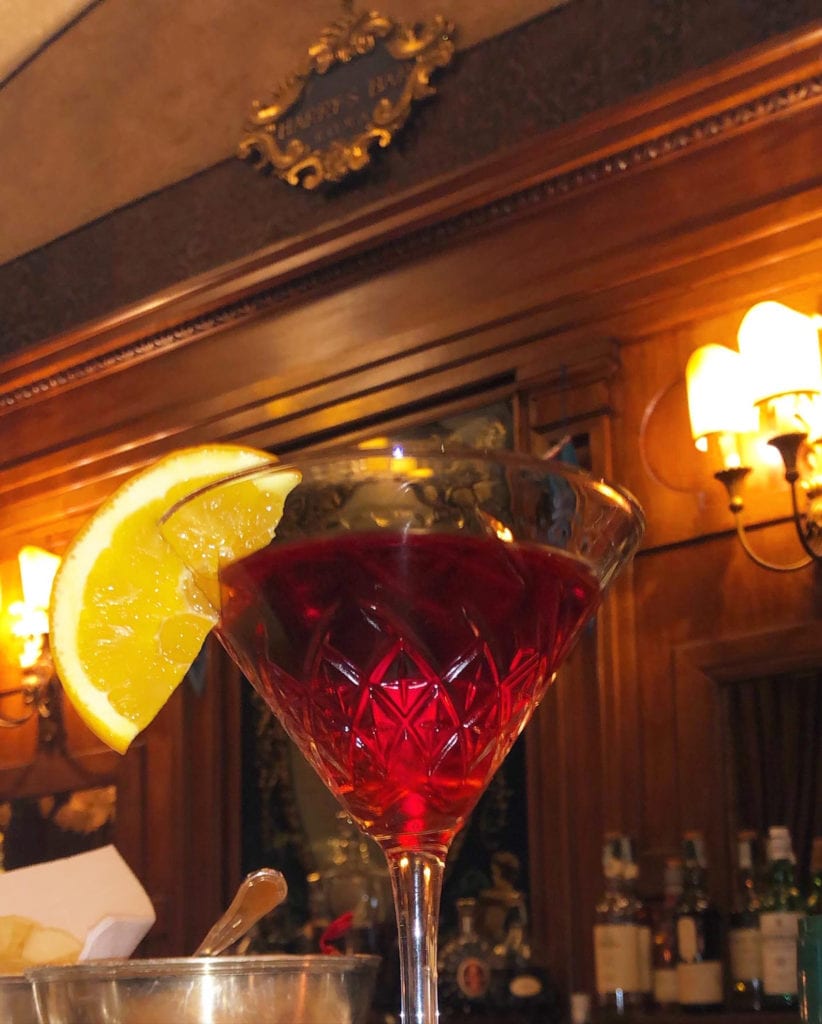
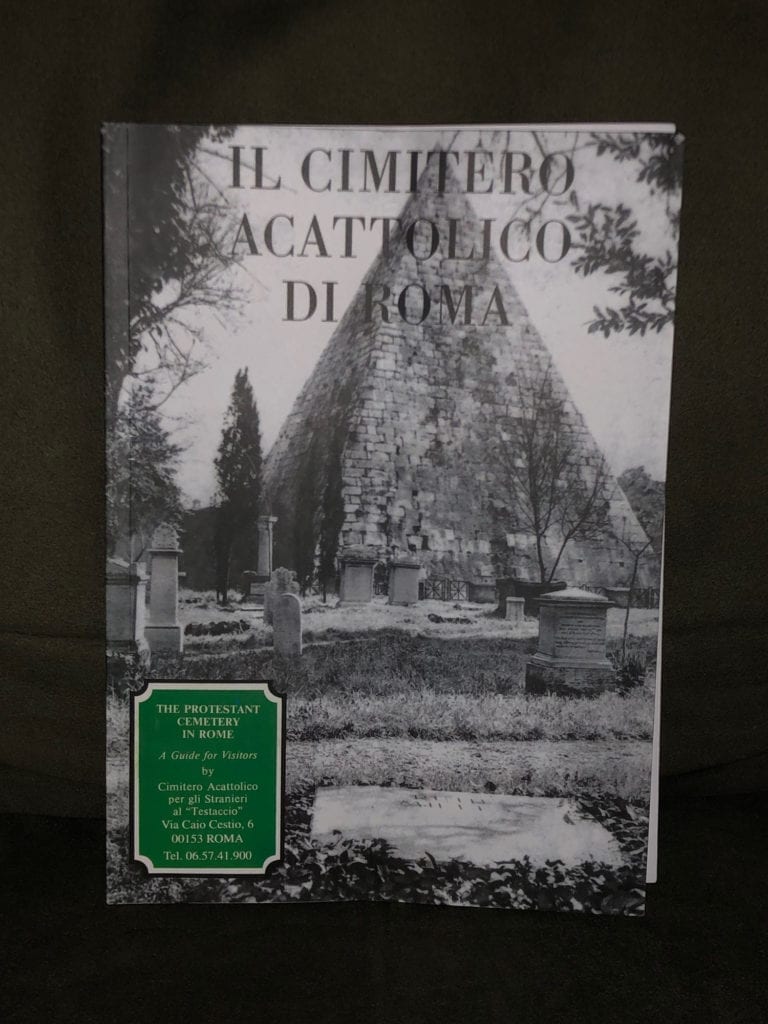
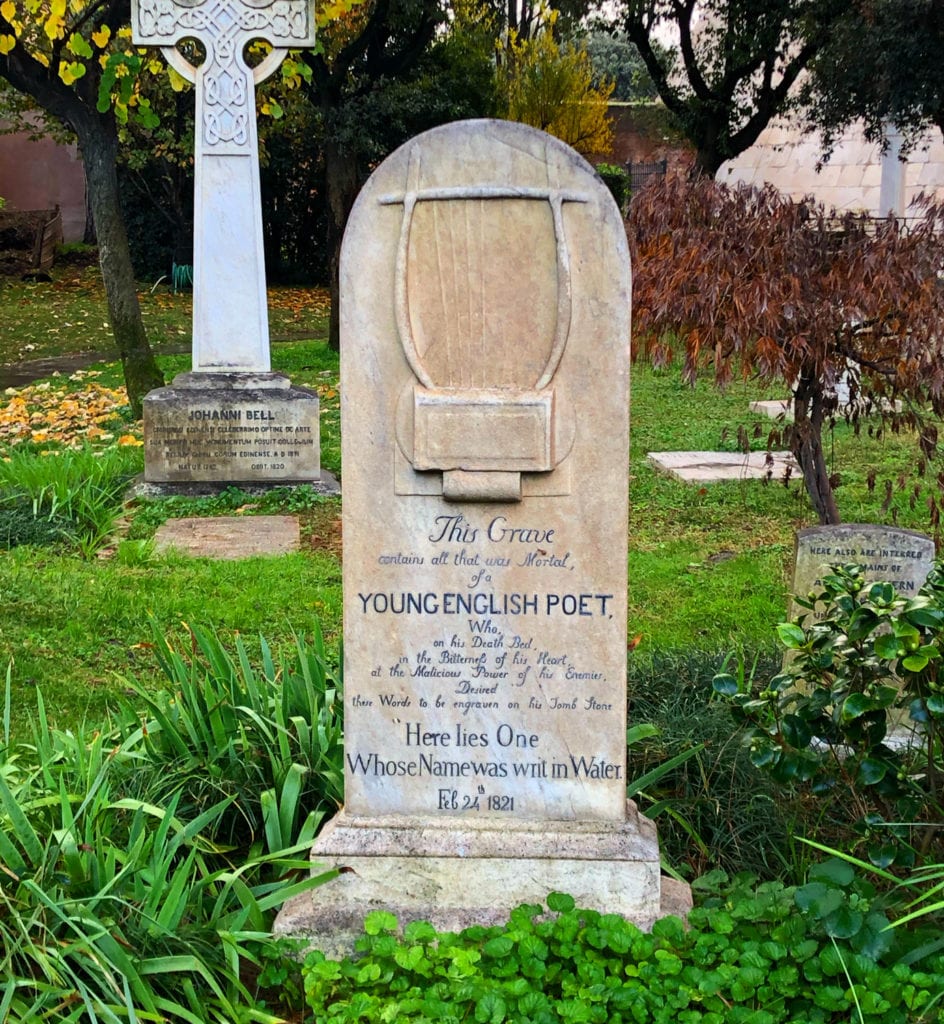
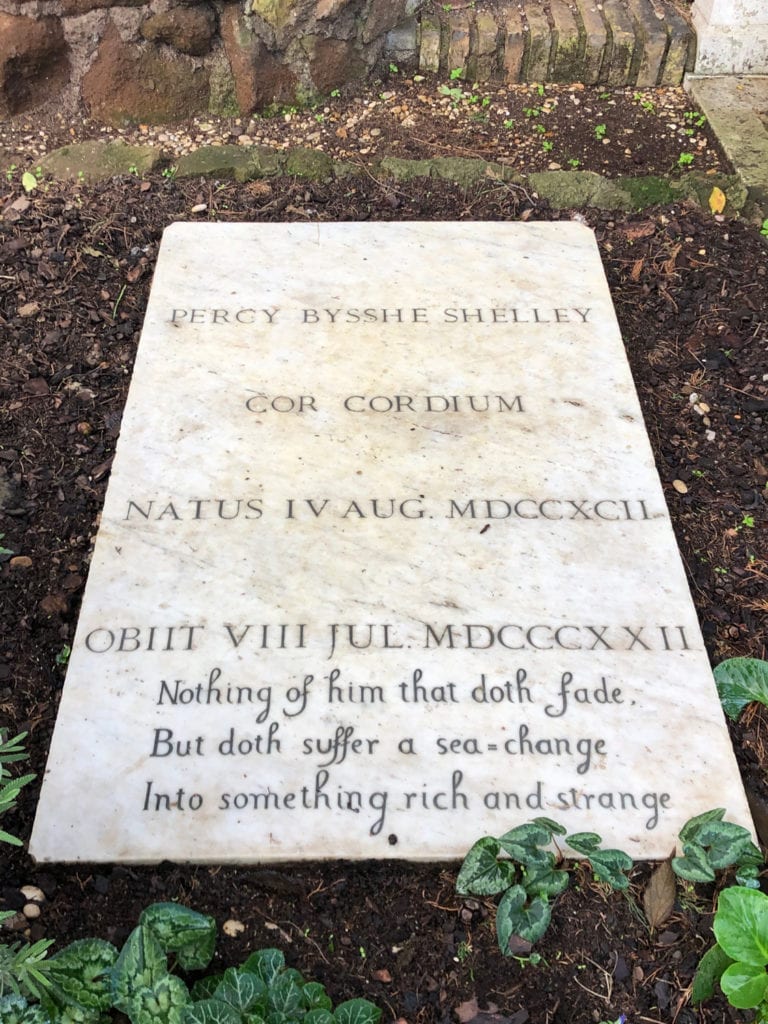
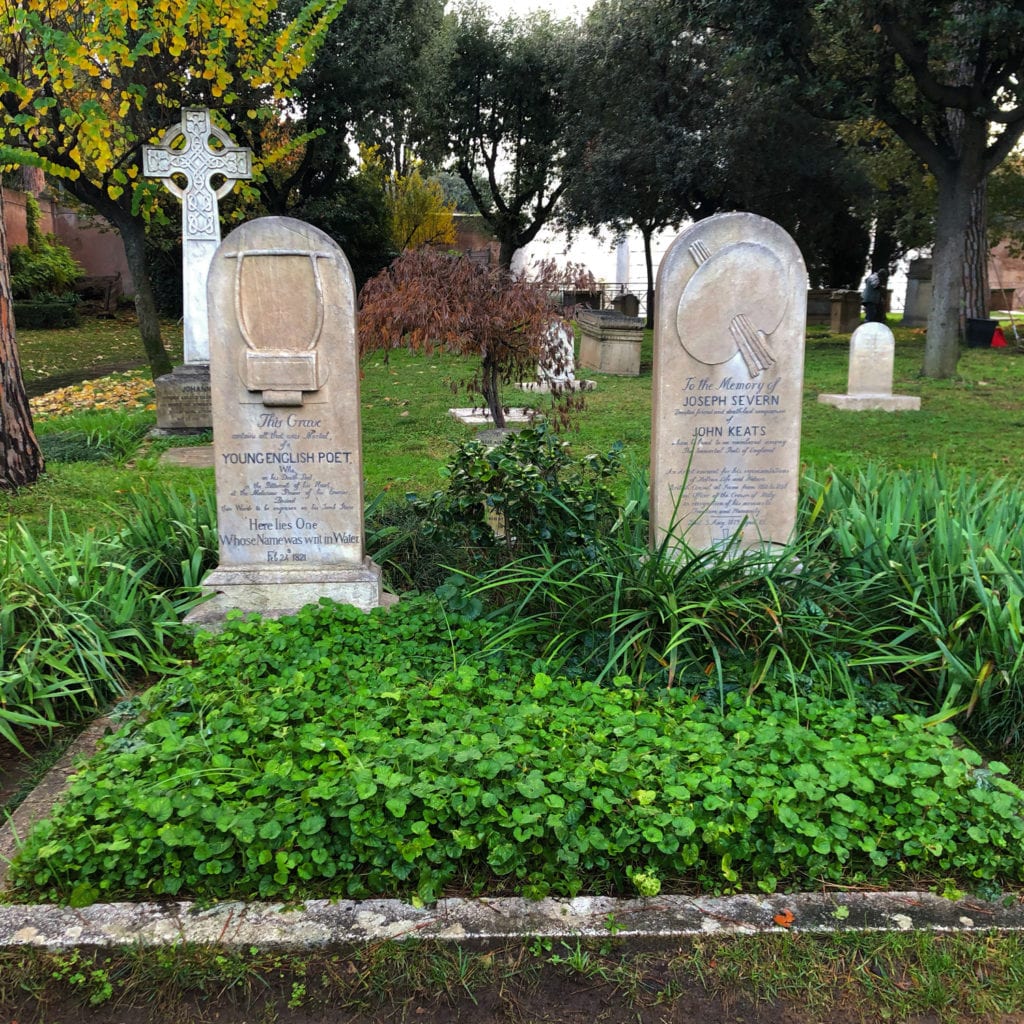
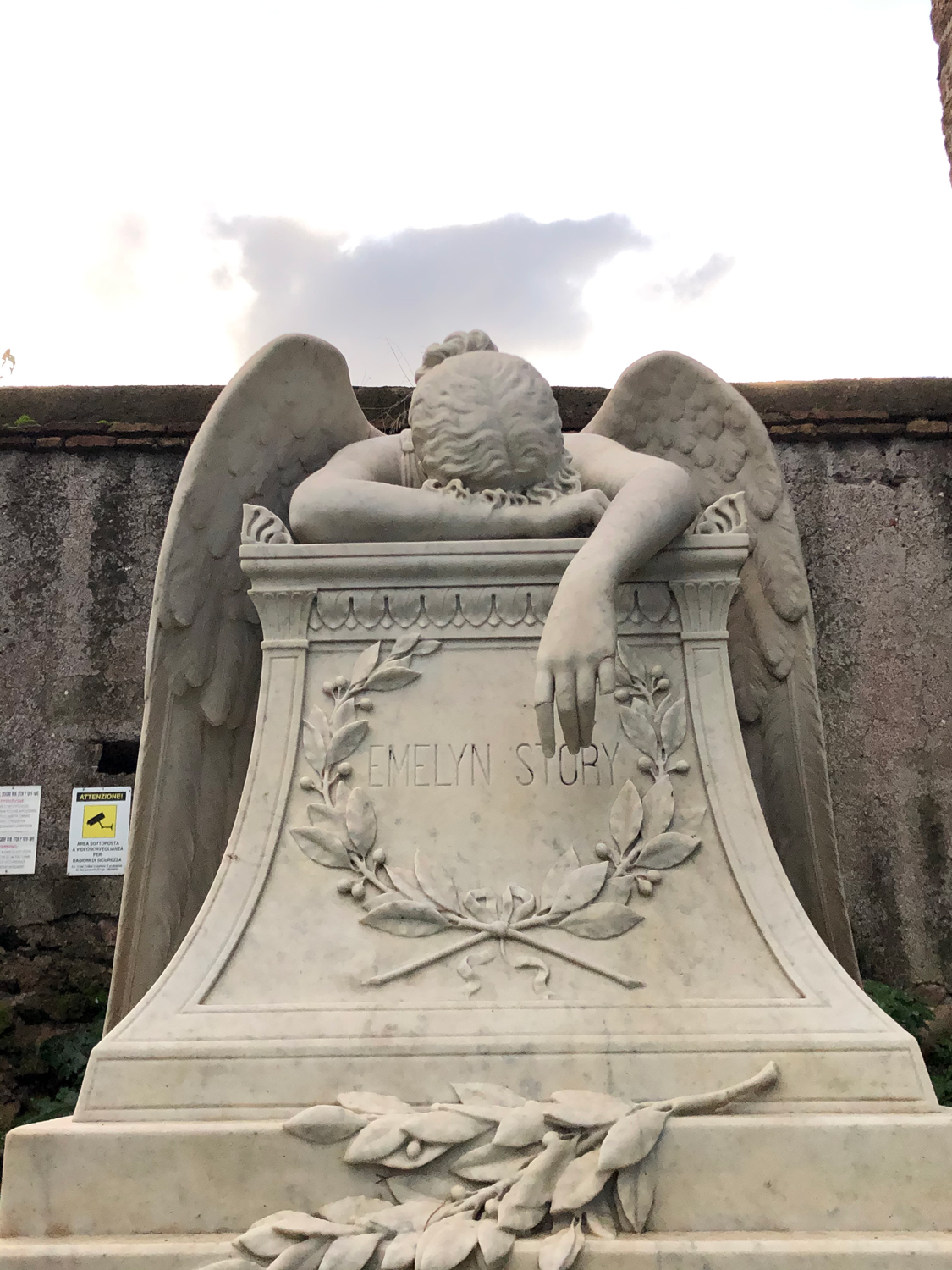
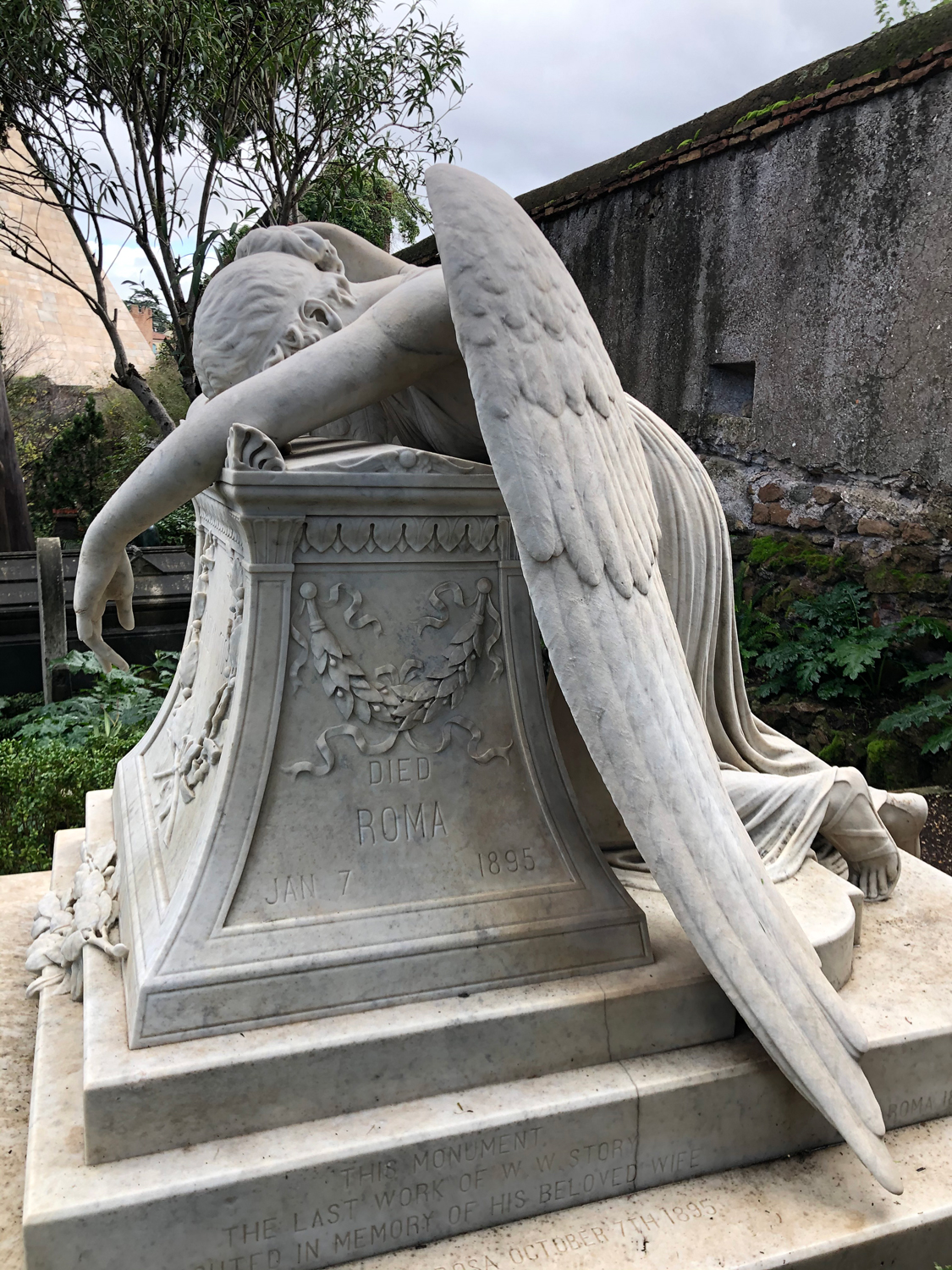
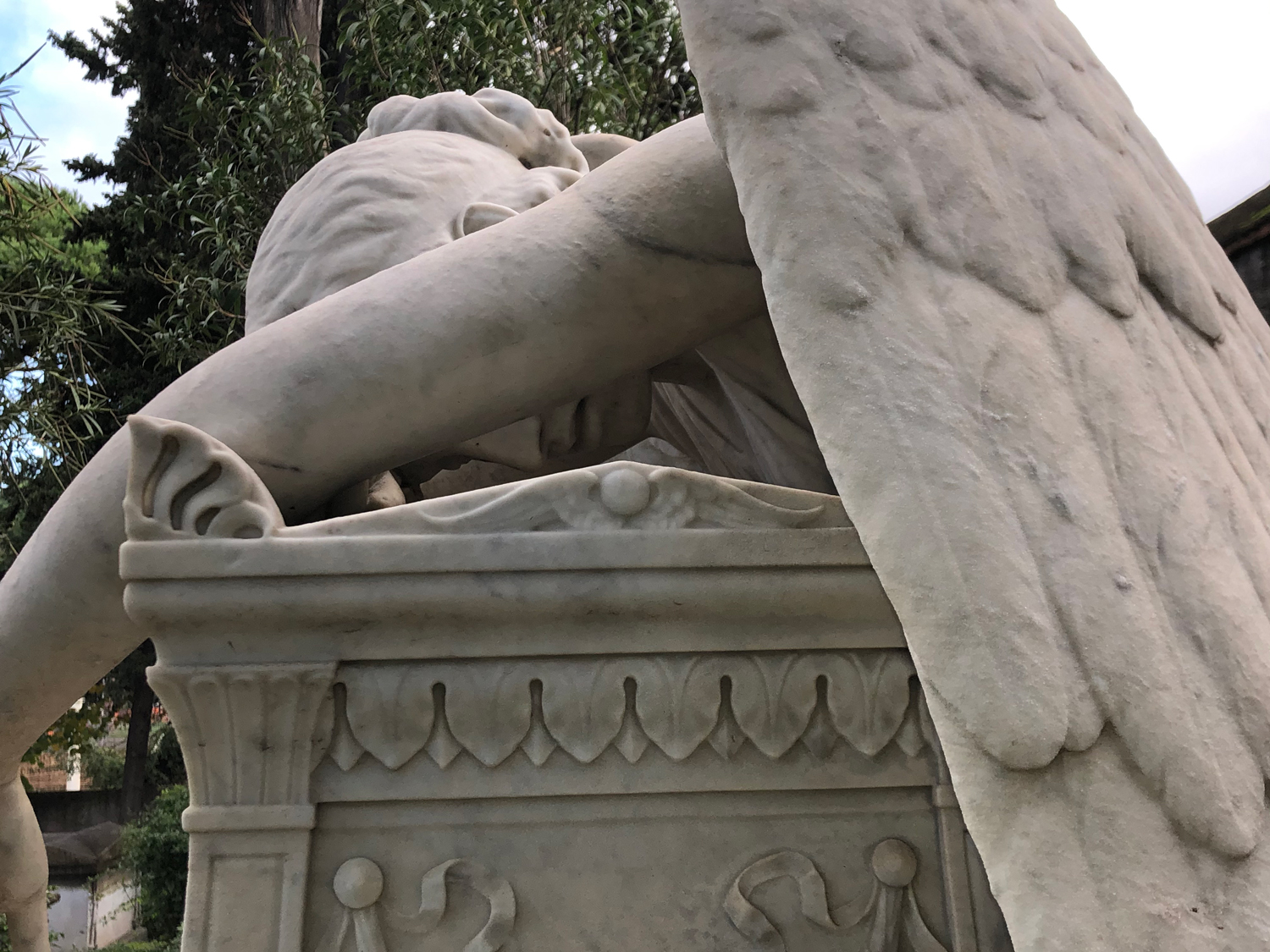
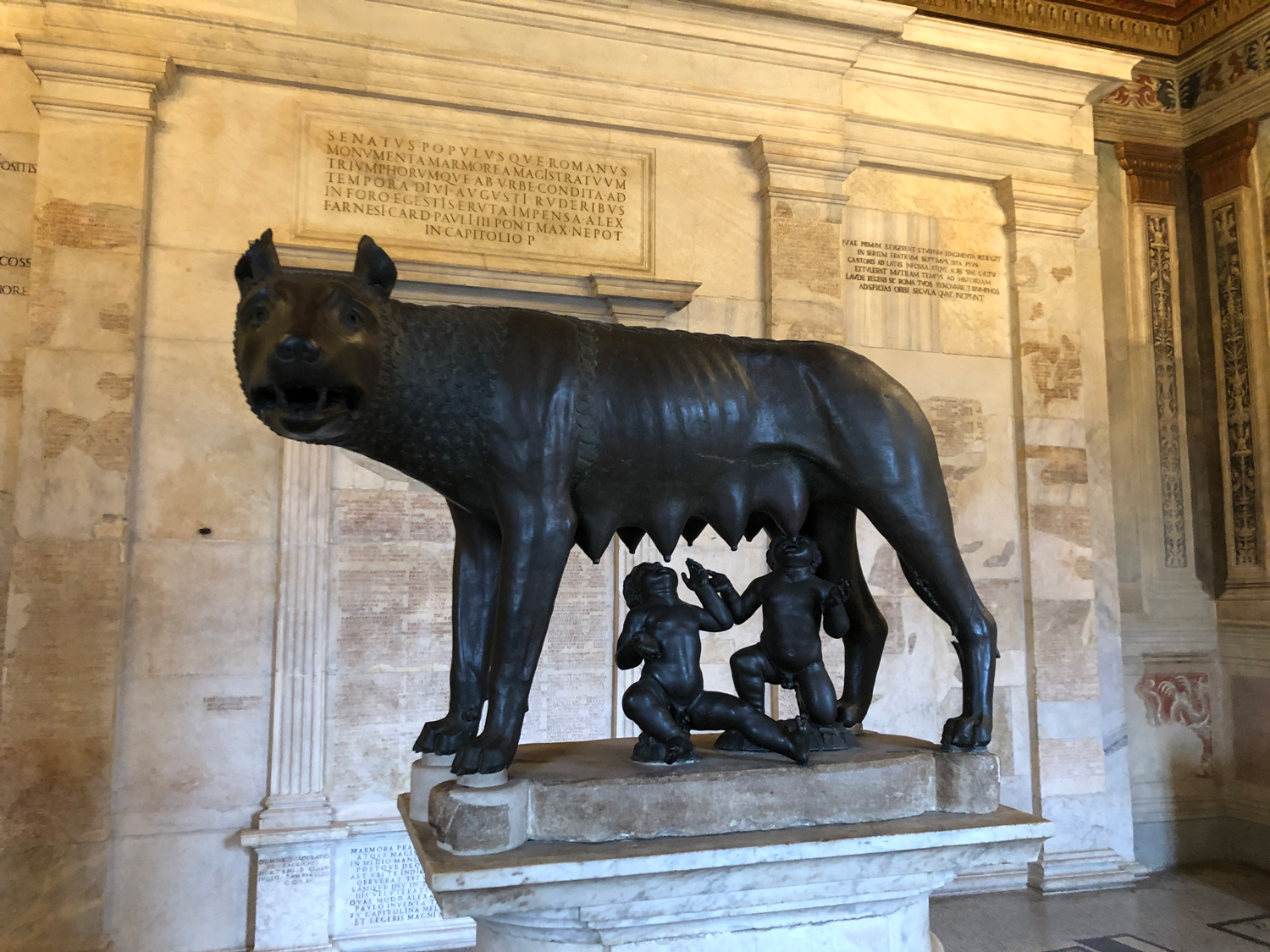
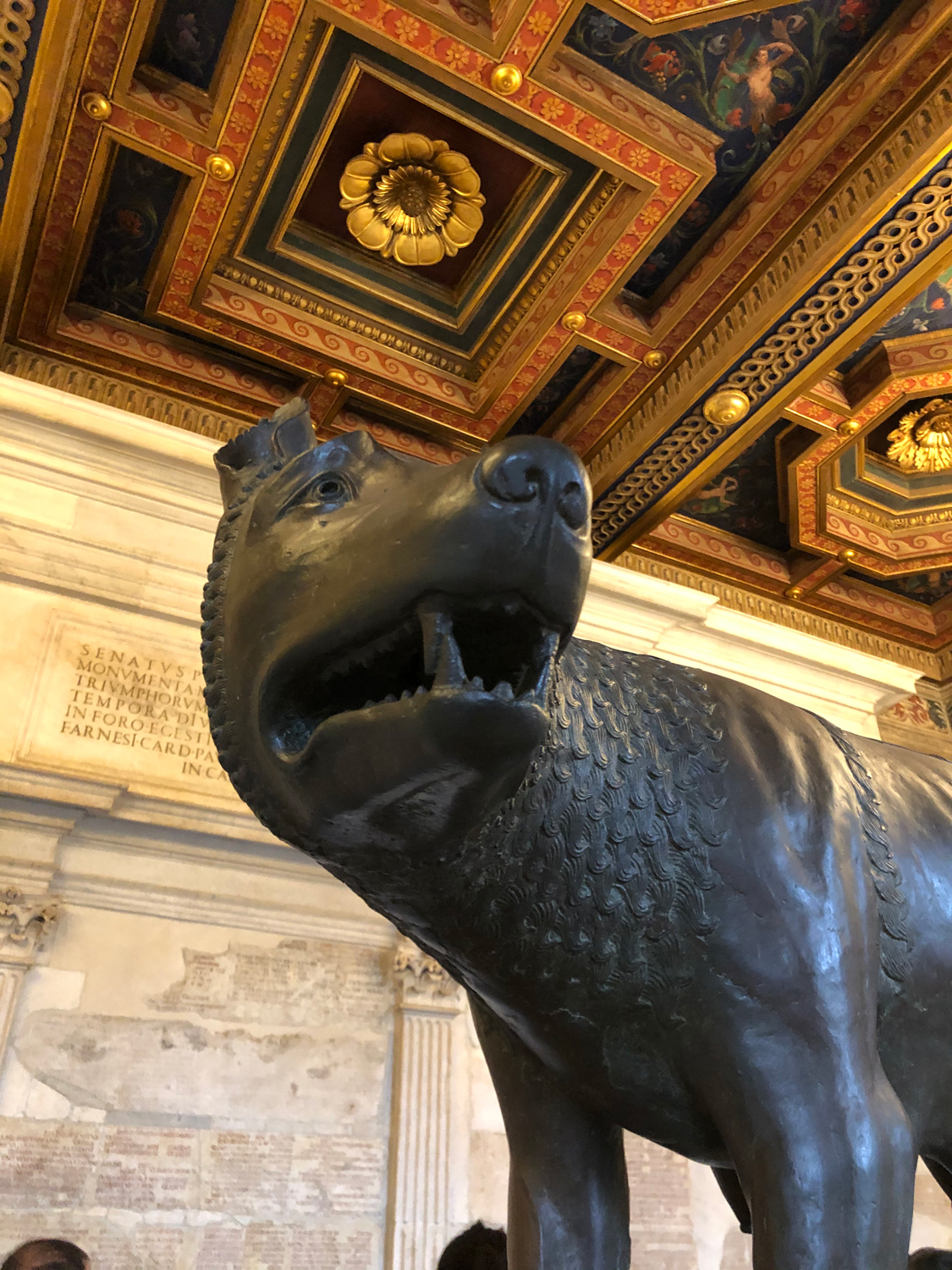
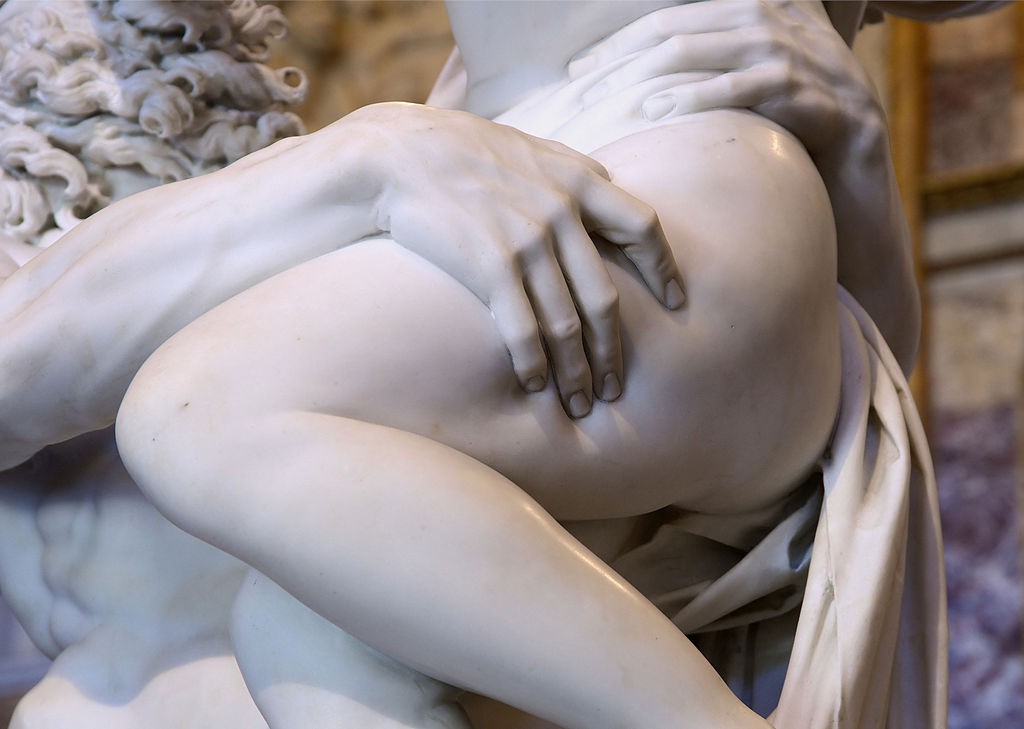
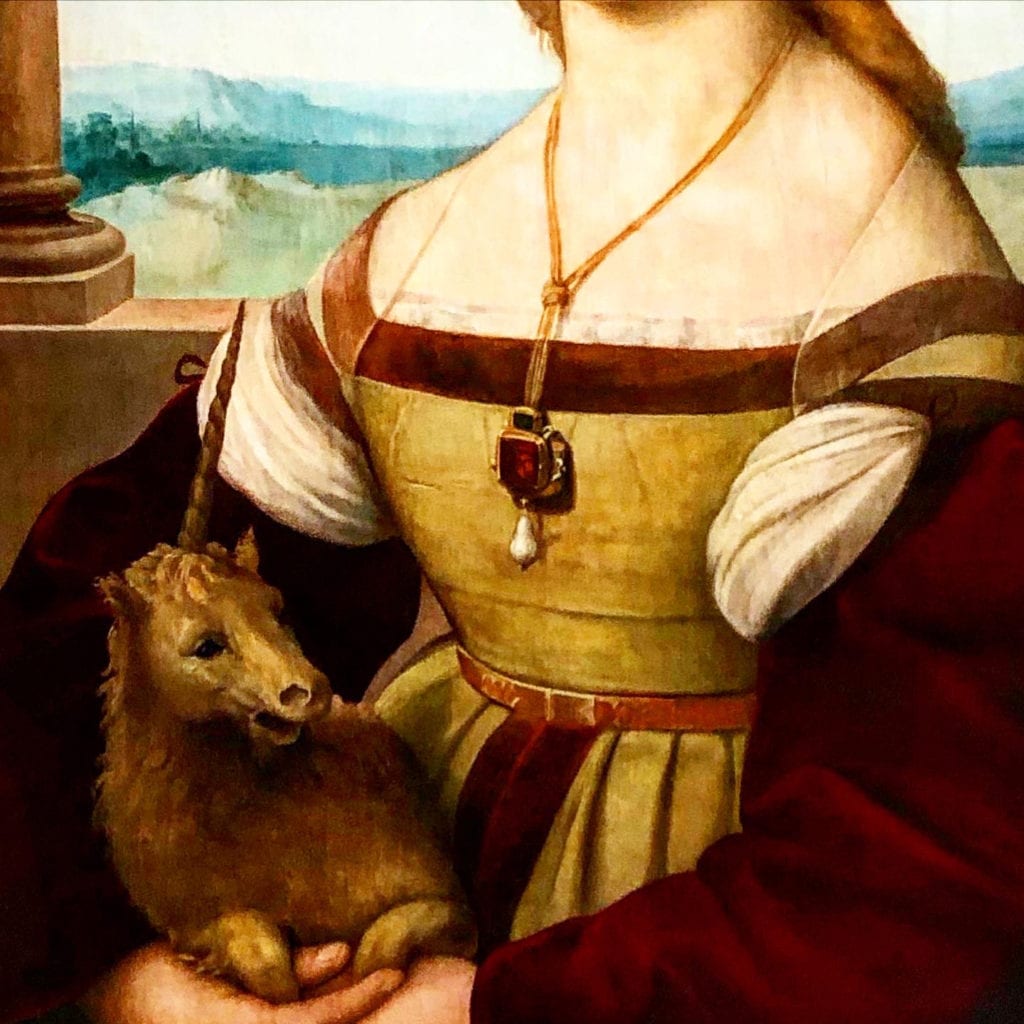

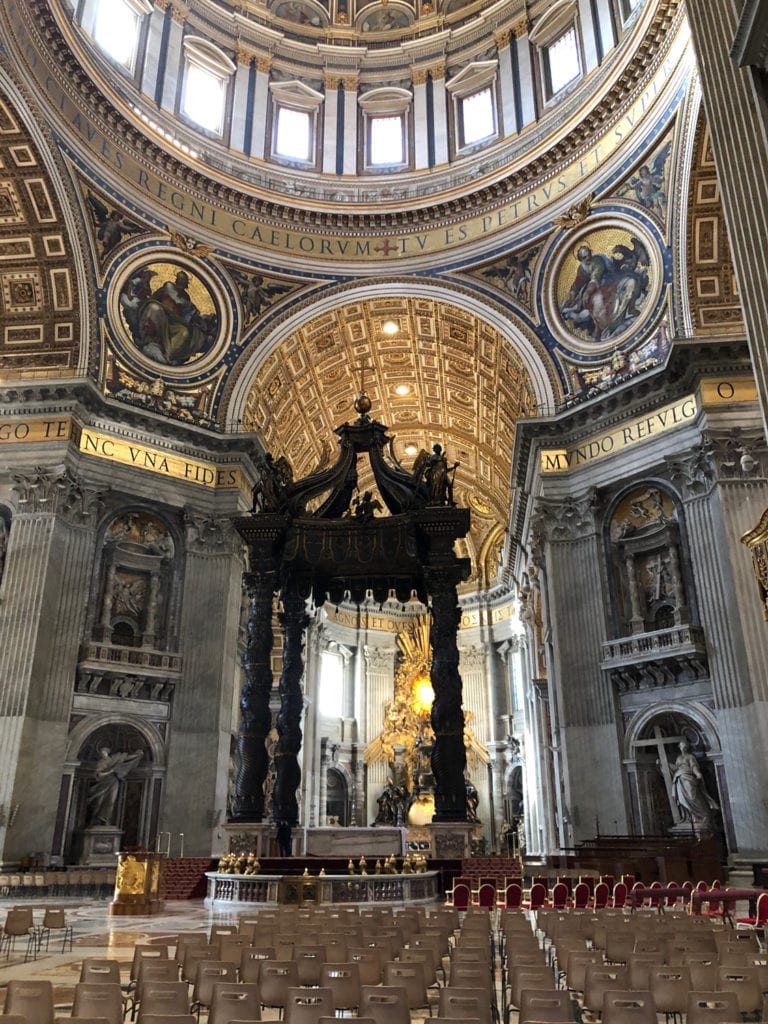

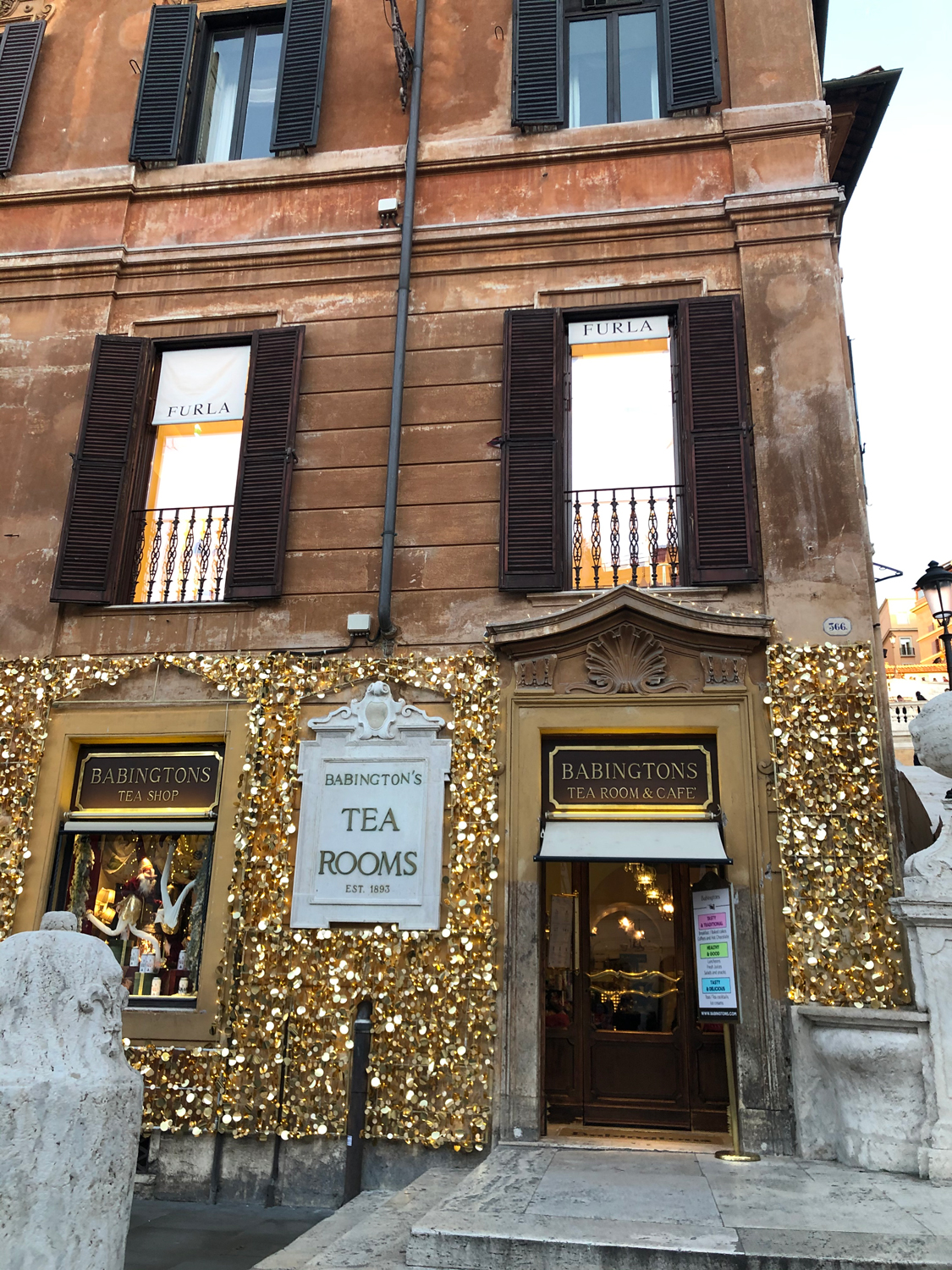
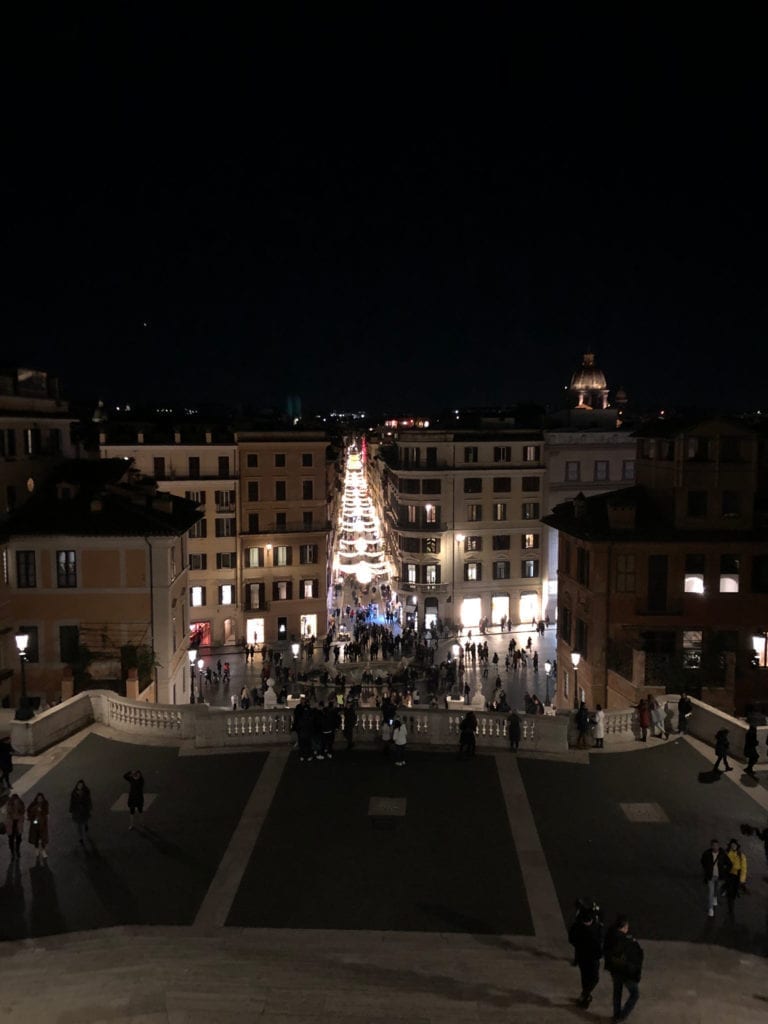
“Oh, Rome! my Country! City of the Soul!
The orphans of the heart must turn to thee,
Lone Mother of dead Empires! and control
In their shut breasts their petty misery.
What are our woes and sufferance? Come and see
The cypress—hear the owl—and plod your way
O’er steps of broken thrones and temples—Ye!
Whose agonies are evils of a day—
A world is at our feet as fragile as our clay…”
Thank you for reminding me of that wonderful trip!
I hope I get there again.
Best
Chuck
Hi Chuck,
Rome is on the top of my list of favorite cities. It’s a shame that I didn’t have time to stop by after Sicily. I’ve visited that lovely city 7 years in a row! I was also there in 2019. There are still so many churches and sights I haven’t seen. In my next trip I will explore the neighborhoods of Trastevere and Ostiense.
Reading your articles about this lovely city makes me want to go there right now…
Livia
That was a magical trip.
So much walking!
Be sure to visit the Protestant Graveyard with the Pyramid outside it – if you haven’t done so already.
Chuck
PS Then Covid hit…the stories after March 2020 will often be dark I’m afraid